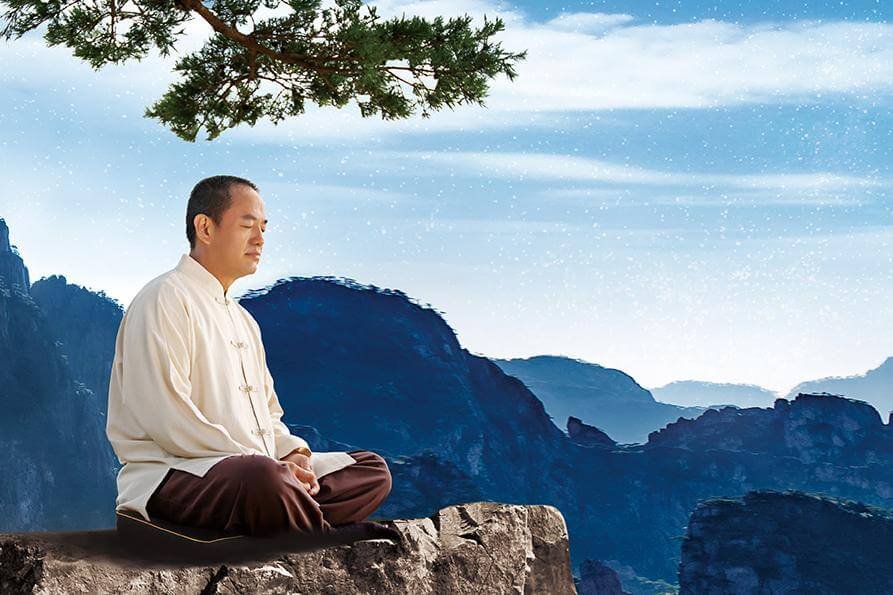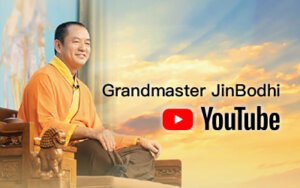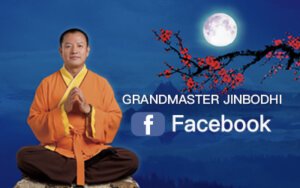
A complete introduction to a meditation method that cultivates wisdom
Zen is derived from the Sanskrit word jhana, which means “quiet and still” and refers to a state of clarity and wisdom. Overall, this state will look like someone sitting quietly with their eyes slightly closed. There are different ways to practice Zen, and sitting meditation is one of them. Today, Bodhi Meditation will guide you to appreciate the ingenuity of sitting meditation so that your heart can return to calmness and clarity.
The benefits of sitting meditation: Enhance spiritual growth and promote physical and mental wellbeing
1. To increase joy and happiness
The pressures of modern life mean that depression and mood swings have become increasingly common. As we cope with the stress of work and life in general, how do we deal with everything more positively? Many scientific studies have confirmed that when a person is meditating, the area in the brain that governs happy emotions and positive thinking becomes stronger, thus releasing more chemicals which boosts happiness and satisfaction. Long-term frequent meditation practice can increase positive emotions and make people happy, outgoing and energetic.
2. Improve physical health: Balance energy and improve blood circulation
Meditation can cleanse the body and mind, help us tap into Universal energy, and stimulate our wisdom and vitality. It can also expel the negative energy that burdens the body, encourage the blood to flow smoothly, and promote ease and relaxation. The benefits of meditation on physical health include: pain reduction; lowering high blood pressure, blood sugar and blood fat; weight loss; and improvement of suboptimal health.
3. Cultivate insight and self-discipline
Focused visualization (also called inner visualization or Zen visualization) leads to a relaxed body and a highly active brain; therefore, practitioners can elevate their concentration and awareness. Research shows that long-term meditation practitioners’ cerebral cortex structure has more insular sulci than ordinary people with similar physiological conditions, meaning that practitioners have stronger abilities to memorize, analyze, judge, and control themselves. Long-term frequent meditation can make people more focused, disciplined and adaptable, helping them to apply wisdom to all facets of life.
4. Resolve worries and deepen your spirituality
Through meditation, people can see the Laws of Nature and understand their spiritual world. As calmness settles in, our ability to understand matters will improve; at this point, we will no longer worry about and feel pain over matters that look like afflictions but are not. Then we can solve trivial issues in daily life by self-adjustment and break through significant mental barriers to obtain enlightenment.
5. Divine powers within reach
According to sutras, when you reach a certain level, you will obtain Divine powers. Specifically, you’ll achieve five levels of eyesight: normal, Divine, awakened, dharma, and the Buddha-eye. You’ll also obtain six types of powers that go beyond the human realm: Divine legs, Divine eyes, Divine ears, mind reading, recollection of all past lives, and freedom from afflictions.
How to master basic methods of sitting meditation?

1. Quiet the mind
Meditation includes several methods, such as walking meditation, standing meditation, lying-down meditation, and sitting meditation. Sitting is a common posture in meditation. Meditation does not equal daydreaming; it involves calling back our scattered mind and concentrating on one area. Then, we let go of distracting thoughts and delusions and settle in the present.
Grandmaster JinBodhi teaches us that the essential element in meditation is relaxing the mind. Visualization is key to relaxation. By repeating special visualizations, we naturally enter a state of purity where one thought replaces all distracting thoughts, and thus we achieve a state of physical and mental freedom, peace, comfort, and joy.
2. Correct meditation posture, clothing and environment
Sitting meditation postures include natural sitting, half lotus, full lotus, and sitting on a chair. Natural sitting refers to sitting cross-legged. The half lotus position refers to putting the calf of one leg on the other leg’s thigh. A full lotus position is when both feet are pulled up and placed on the opposite thigh. The posture of sitting meditation resembles the shape of a pyramid. Maintaining this posture can help one to develop a strong connection with the world and receive energy more efficiently. If sitting cross-legged is difficult, you can also sit on a chair with the soles of your feet on the floor.
Clothing for meditation should be loose and comfortable. The environment for meditation should be quiet, with soft lighting and fresh air. Compared to practicing at home, meditating in places designated for cultivation, such as meditation halls and monasteries, will render a better result as the energy field will be calmer and purer.
Entering samadhi through sitting meditation
1. The state called samadhi
Samadhi means reaching a deep state of meditation wherein there is no consciousness, pain, worry, or concept of time and space.
2.Entering samadhi
Self-cultivating through visualization can slowly bring people into a state of extreme purity and then samadhi. Practices of Bodhi Meditation, such as The Meditation of Greater Illumination, The Meditation of Purity and the Immeasurable Chanting method, belong to the category of “meditation through visualization.”
When you follow the guidance within these practices and stay away from the interference of disturbing thoughts, you will obtain purity of body and mind with all thoughts unified. Once you achieve this, you’ll have the opportunity to enter samadhi.
3. Different levels of deep meditation: four dhyanas and eight samadhis
There are multiple levels and states of deep meditation. “Four dhyanas and eight samadhis” is the common name for four dhyanas in the realm of form and four dhyanas in the formless realm.
In brief, the first four dhyanas consist of a progression of: directed thought; internal assurance; pleasure in equanimity; equanimity, but neither pleasure nor pain. The latter four dhyanas consist of a progression of: the dimension of infinite space; the dimension of infinite consciousness; the dimension of nothingness; and the dimension of neither perception nor nonperception.
The progression from beginning to the fourth level of meditation is the process during which we eliminate all afflictions to the point where we can control our level of thinking. Once we reach the fourth level of deep meditation, we won’t feel changes in time or space. But at this level, we’re still not free from being controlled by genetic influences. For the other four states in the formless realm, we will be able to follow Heaven, the Buddha, compassion, or another indescribable state to enter samadhi and completely remove all afflictions and their root causes in our genes. The feeling of entering the four states in the formless realm is like reaching both the core and starting point of the infinite Universe. It is also the zero point for many intricate and convoluted concepts and the origin of all creation.
When you reach an extremely deep state of wisdom, many incredible abilities arise. After experiencing the last four meditative states, you will no longer be afflicted by anything; you will emanate enough wisdom and energy to change the world. Once you reach this state, you do not remain in the human form, instead becoming a more noble existence we call a buddha or a celestial being.
4. Precautions for entering samadhi
Samadhi is an exceptional realm with great energy; one needs a solid foundation of visualization and energy to sustain this state. If you attempt to enter samadhi rashly, it might cause disorder in your mind and behavior and even harm your health. So, if you want to enter samadhi, you must enter it through steady and sure progress. Starting with visualization practice is the safest method; when you achieve a more advanced level of self-cultivation, you can enter samadhi without visualization.
What are the precautions for getting started in meditation?
1. Environment for sitting meditation
You can choose a flat cushion or a slightly higher back cushion for sitting meditation. For safety, it is better to have a backrest when practicing sitting meditation. If your back is against the wall, you can put a pillow or a thick blanket between the waist and the wall to prevent cold wind from entering the body. If the room is air-conditioned, you can sit on a Zen chair instead to stay away from the circulating air.
2. Suitable time for meditation
Do not meditate when you are too full or hungry, or when weather conditions are severe, such as thunder and lightning. Otherwise, generally speaking, you can do sitting meditation anytime.
For office workers who go to work in the morning and leave work in the evening, the early morning is a good time to practice as you can bring energy and vitality to the rest of the day. In addition, meditating after lunch, during breaks and at night can help relieve fatigue and replenish energy. The more training time you accumulate, the greater the effect on health.
3. Will meditation cause you to lose touch with reality?
An improper method of sitting meditation may lead to deviations such as mild psychotic symptoms, hallucinations, or even vascular and heart diseases. In severe cases, it can even lead to death. Therefore, to learn meditation, it is crucial to have high-level practitioners and professional teachers instruct you in person.
Contact Bodhi Meditation to experience faster, better results from sitting meditation
Created by Grandmaster JinBodhi, Bodhi Meditation is a series of meditation methods suitable for modern people.
Bodhi Meditation is a form of Zen practice via visualization. By visualizing compassion and light and communicating with the compassionate energy of the Universe, we stimulate the body’s healing power. It is a simple, healthy way to obtain remarkable results quickly; it can help meditators avoid obstacles and meditate without risk.
To meet modern people’s diverse needs, Bodhi Meditation offers various meditation courses such as Health & Happiness Retreats, Stress-Relief Classes and Chanting Retreats. These courses guide students to learn core meditation techniques step by step, to systematically understand meditation, and to combine meditation with daily life.
Visit to learn more about Bodhi Meditation’s courses and exercises, and to find the contact information of Bodhi Meditation Centers worldwide. You can also subscribe to GrandMaster JinBodhi’s YouTube Channel learn more about meditation and experience faster, better results from sitting meditation.
【Related Suggestions】
Meditation and How it Improves Overall Immunity

